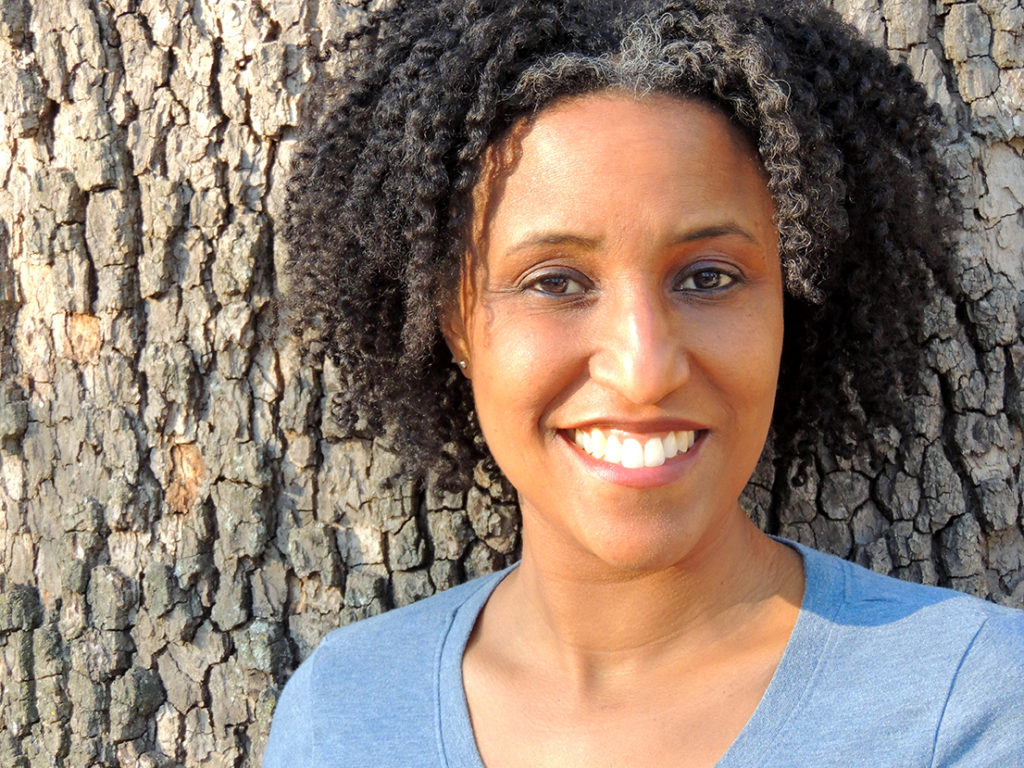A new type of art salon will make its debut on March 31.
SALON, Student Artist Live Opportunity Night, will be presented by two student organizations, inVisibility from the School of Theatre, Film & Television and The Sienna Collective from the School of Art.
The event is presented in conjunction with the School of Art BFA Exhibition opening reception next Thursday in the new School of Art lobby and patio from 5-7p. Visitors can expect to see student works and works-in-progress in a variety of different forms from 17 students.
The event aims to provide an opportunity for emergent artists whose voices have been historically underrepresented in the performing and visual arts.
Tioni Collins, student services coordinator and theatre studies instructor at the School of Theatre, Film & Television, is the driving force behind the concept. Her job description includes increasing recruitment and retention generally and making students feel supported in all areas of life.

Collins, who began in her role this past August, started with active listening to the voices and experiences of our students from historically excluded populations. She heard a lot about people operating in silos and not paying attention to others. She was also heard the need for providing “a support system for people of color and people from other underrepresented or historically excluded groups in the arts,” noting that no regional or national organizations of this type exists.
“I was looking for a way that we can support these emergent artists and give them a community that allows them to connect with other people who may be experiencing the same things or who share similar or related backgrounds,” she said.
Collins has ample real-life, personal experience in this area. She was the first non-white person to earn an MFA in theater directing in 2002 from DePaul University. (There have several more since.)
“One of the things I saw as a person of color at a PWI, as we call them, which are predominantly white institutions, was the lack of attention. I’m a first-generation college student and nobody cared; it was a very lonely place to be. I had very few people around me that looked like me, or that shared my experience.
“I had a professor of directing who called me a ‘directress.’”

So, when she got to Tucson and listened to the TFTV students, she developed an idea to provide that support system with a new student organization, inVisibility, and a new event that allows access for students, especially BA students, to have more presentation and/or performance opportunities.
The name, SALON, alludes to fancy, elite 16th century salons in Paris.
“But without the pretension.”
“This event is an extraordinary opportunity for Arizona Arts students of color and students from underrepresented communities to foreground their voices and develop work that is personal, moving and impactful.”
The student group’s name came from a suggestion by Professor Aaron Coleman, who is the faculty sponsor for a similar student group, The Sienna Collective at the School of Art, co-presenter for the event.
“We were talking about ‘how can we make these students who feel invisible, feel more visible?’ Aaron suggested, ‘what about taking the word and capitalizing the V, so you’ve the visible within the invisible?”
inVisibility mission
Creating artistic space for those who feel devalued, ignored, co-opted, or silenced by mainstream culture.
The Sienna Collective mission
To facilitate a space for underrepresented and emerging artists of color to cultivate relationships with our community, to embrace alternate projects and to remain persistently disobedient to traditional thinking.
Collins’ first vision of the event was a big interactive art carnival “with someone doing a monologue over here, someone’s singing a song over there. There’s a dance going on over there. With art on the walls, there’s sculptures there. But then I thought, ‘let’s do something that’s manageable.’
There are 20 students on the planning committee, and they’ve been very hands on.
“I really want it to be student driven. So, they are learning that when you’re not given space – that’s the whole thing about “making space” – you have to do it yourself. If no one’s going to produce your work, then YOU produce it, YOU make it happen.”
There are 17 student presentations, solo and duet songs, a monologue, costume design renderings, 2D and 3D visual arts, and a reading of a play in progress.
“We strongly encouraged this one student who was feeling a little shy about their work. It’s a play that they’ve written, and they felt it was not ready yet. But this is what this space is for, it’s not about finished productions. It’s finished and completed works and works in progress because this is an opportunity for you to get up in front of your peers, put it out there and then get some feedback from people who love you, for people who want you to do your best, who are not there to tear you down, who are there to help give you the space to do your thing and to grow as an artist.”

Together we elevate the arts …
Support Arizona Arts
Find your creative community …
Become a Wildcat
@UArizonaArts | #arizonaarts
